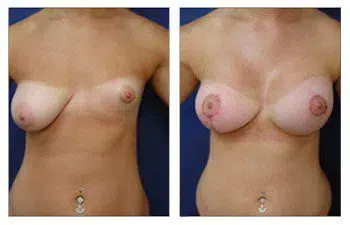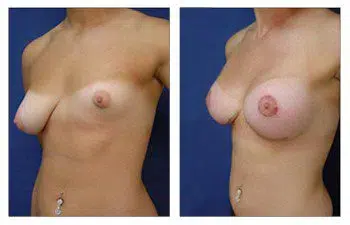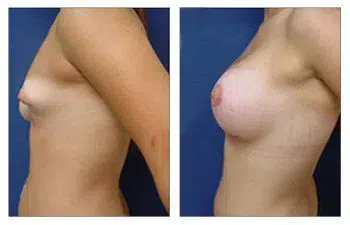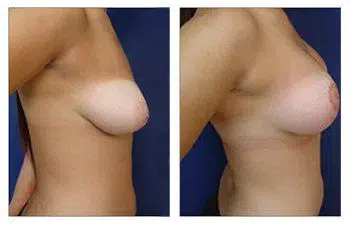





When having a breast implant augmentation procedure, avoiding breast implant malposition is crucial for the best and most natural-looking and feeling results. Board-certified breast augmentation specialists at SurgiSculpt share the aftercare protocols below for breast implants to avoid breast implant malposition.
At SurgiSculpt, we use a breast implant augmentation breast band for implant patients to keep implants down and on top of the inframammary crease. Intraoperatively, the implants are placed under the pectoralis muscle, but they are in an unfavorable position, under the pec, and tighter at the bottom than the top (subclavicular).
Implants tend to want to lift to the larger space up high since it is tighter at the bottom and there is more space up top. This propensity is guarded against by avoiding unnecessary surgical dissection up high.
You also want to avoid sleeping on your belly to avoid breast implant malposition. Sleeping in that position will push your breasts up. Also, it is important to avoid using your arms and pecs, as early use of your arms and pecs– before your breast capsule position is stabilized, which will squeeze your implants up.
Once the natural scar tissue around the implant forms, malpositioning of the implant is avoided since your stabilized implant positions forbid movement. This occurs over the first two weeks.
So, the breast band is your savior over the first two weeks until the capsule forms. The breast band acts like a fence or blockade that avoids implant elevation. The problem with conventional breast bands is that they rub against your armpit, causing it to chafe.We at SurgiSculpt created the mermaid breast band that contains a cut-out in the armpit region, thus avoiding chafing. We had a problem with noncompliance of patients not wearing it for the two weeks we eliminated.
The 18-year-old patient you see here is another breast implant augmentation patient who did not experience breast implant malposition. They followed our post-care instructions and wore their mermaid breast band for the first two weeks of recovery.
